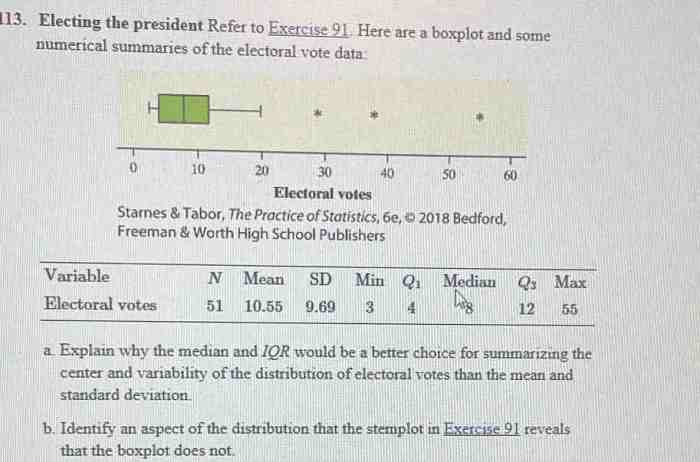Updated the Practice of Statistics 6e Answers is a comprehensive guide to statistical concepts and methods. It provides a thorough explanation of the fundamental principles of statistics, including probability, sampling, and hypothesis testing. The book also includes a wide range of examples of different statistical methods used in practice, and it discusses the importance of statistical literacy in modern society.
In addition to providing a strong foundation in statistical theory, Updated the Practice of Statistics 6e Answers also provides practical guidance on how to collect, clean, and analyze data using statistical software. The book includes step-by-step instructions for performing a variety of statistical analyses, and it also provides tips on how to interpret and present statistical results.
This makes it an ideal resource for students and researchers who are new to statistics, as well as for more experienced practitioners who want to brush up on their skills.
1. Statistical Concepts and Methods

Statistics is the science of collecting, analyzing, interpreting, and presenting data. It provides a framework for understanding the world around us and making informed decisions. Fundamental concepts in statistics include probability, sampling, and hypothesis testing.
Probability quantifies the likelihood of events occurring, sampling involves selecting a representative subset of a population to study the entire population, and hypothesis testing provides a systematic approach to evaluating claims about a population.
Statistical Methods
- Descriptive statistics summarize and describe data using measures like mean, median, and standard deviation.
- Inferential statistics draw conclusions about a population based on a sample, using methods like confidence intervals and hypothesis tests.
- Regression analysis investigates the relationship between a dependent variable and one or more independent variables.
- Analysis of variance (ANOVA) compares the means of two or more groups.
Importance of Statistical Literacy
Statistical literacy is essential in modern society, where we are constantly bombarded with data and information. It empowers individuals to make sense of data, evaluate claims, and make informed decisions based on evidence.
2. Data Analysis and Interpretation
Data analysis involves collecting, cleaning, and analyzing data to extract meaningful insights. Statistical software, such as R or Python, streamlines these processes.
Data Collection
- Determine the appropriate data collection method (e.g., survey, experiment, observation).
- Design a data collection plan that ensures representativeness and minimizes bias.
Data Cleaning
- Identify and remove outliers, missing values, and duplicate data.
- Transform data to improve its suitability for analysis (e.g., log transformation).
Data Analysis
- Use descriptive statistics to summarize and visualize data.
- Apply inferential statistics to test hypotheses and draw conclusions.
- Identify patterns, trends, and relationships in the data.
Common Pitfalls and Biases
Bias and errors can arise during data collection and analysis. It is crucial to be aware of these pitfalls and take steps to mitigate them.
3. Statistical Modeling and Inference: Updated The Practice Of Statistics 6e Answers

Statistical modeling involves creating a mathematical representation of a real-world phenomenon. Models can be used to predict outcomes, make inferences, and test hypotheses.
Types of Statistical Models
- Regression models predict a continuous outcome variable based on one or more independent variables.
- ANOVA models compare the means of two or more groups.
- Time series models analyze data collected over time.
Model Fitting and Prediction
- Fit a model to data using statistical techniques (e.g., least squares regression).
- Use the fitted model to predict outcomes or make inferences about the population.
Model Validation and Evaluation
Validate models using techniques like cross-validation to ensure their accuracy and reliability.
4. Applications in Various Fields
Statistics finds widespread applications across various disciplines, including:
Medicine
- Clinical trials evaluate the effectiveness of new treatments.
- Epidemiological studies investigate the causes and prevalence of diseases.
Business
- Market research analyzes consumer behavior and preferences.
- Financial modeling predicts stock prices and investment returns.
Social Sciences
- Survey research gathers data on public opinion and social trends.
- Educational statistics evaluate the effectiveness of teaching methods.
Ethical Considerations
Statisticians must adhere to ethical principles, such as privacy, confidentiality, and objectivity, when working with data.
5. Recent Advancements in Statistics

Statistics is a rapidly evolving field, with new advancements continuously emerging.
Computational Statistics
Advanced computational methods enable the analysis of massive datasets and complex models.
Machine Learning
Machine learning algorithms automate the process of model building and prediction, enhancing accuracy and efficiency.
Data Science, Updated the practice of statistics 6e answers
Data science combines statistics, computer science, and domain knowledge to extract insights from large and complex datasets.
FAQ Guide
What are the fundamental concepts of statistics?
The fundamental concepts of statistics include probability, sampling, and hypothesis testing.
What are some examples of different statistical methods used in practice?
Some examples of different statistical methods used in practice include regression analysis, ANOVA, and chi-square tests.
What is the importance of statistical literacy in modern society?
Statistical literacy is important in modern society because it allows us to make informed decisions about the world around us. By understanding the principles of statistics, we can better understand the data that we are presented with and make more informed decisions about our lives.